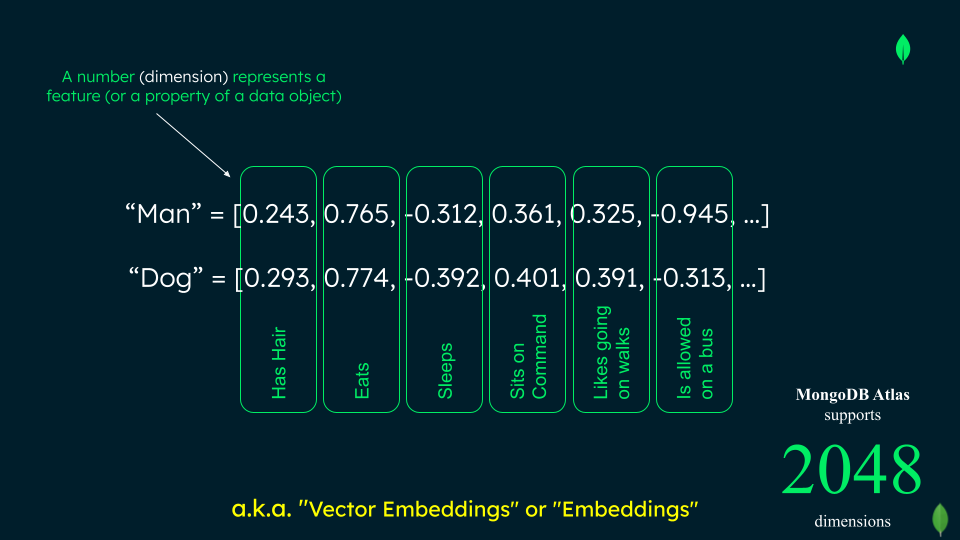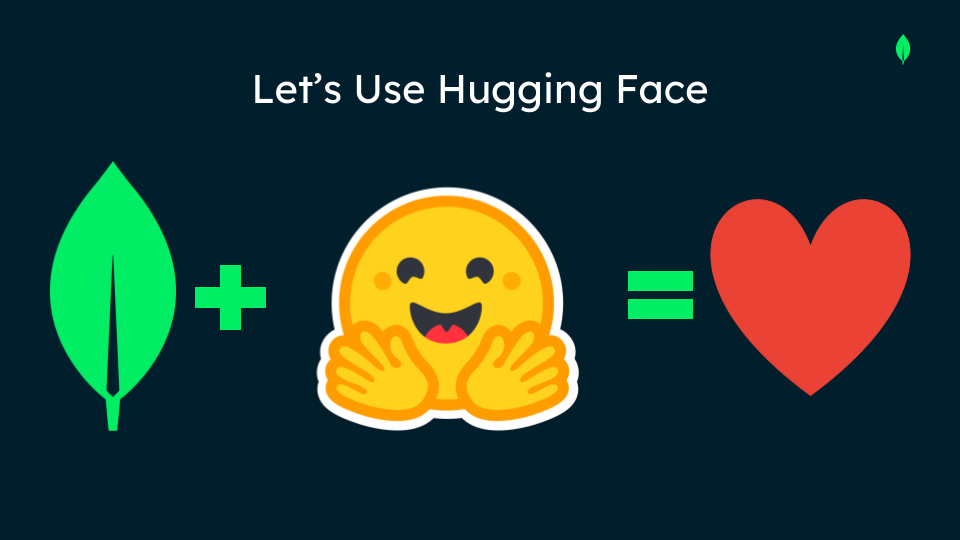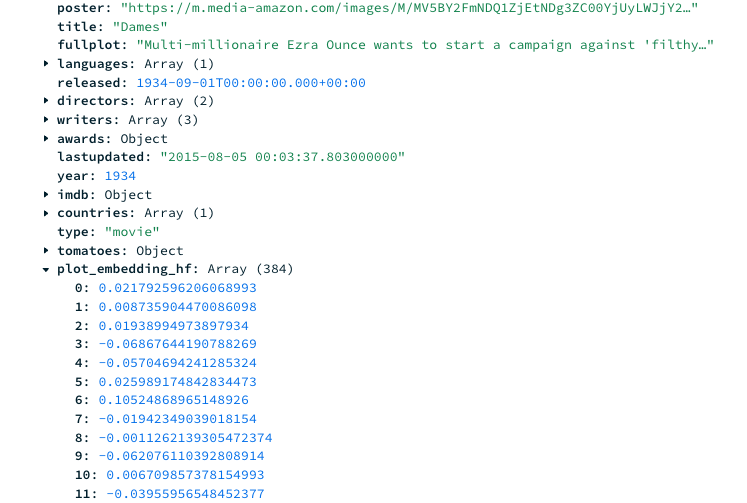Looking to power an artificial intelligence with long term memory that could take over the world? Or maybe something simpler like retrieval augmented generation (RAG), semantic search, recommendation engines, or dynamic personalization. It all starts with the ability to search across the vector embeddings of your data.
In this lesson, you will learn how to create vector embeddings to store inside MongoDB Atlas with machine learning models such as the ones provided by OpenAI and Hugging Face. Then you will see how easy it is to implement vector search across by using the $vectorSearch operator in the easy-to-learn, ever-extensible MongoDB aggregation framework you already know and love. 💚
With just a few code functions, a sample movie dataset, and a free forever MongoDB Atlas cluster, you will semantically search for movies based on their plot. Semantic search means we search across data using intent and contextual meaning for more relevant results. For instance, you can search for cop instead of police man and find both (and then some). Compare this to full-text search which only allows you to find words by spelling, not the general meaning. You know what I mean. 😉
This project is based on the fantastic YouTube tutorial by Jesse Hall. Click to open the link to the tutorial and code along with Jesse.
Atlas Vector Search works by sending your data of any type through an encoder to obtain vectors, simply an array of floats, as a numeric representation of that data in n-dimensional space. Each number in your array represents a property of that data object.
Similar data is mapped closer to each other. In the image below, you can see that sports movies and superhero movies map to proximal clusters once vectorized.
Leveraging the MongoDB document data model, this n-dimensional array is then stored and indexed alongside your other data inside a document.
{
"_id": "573a1390f29313caabcd5293",
"title": "Hoosiers",
"plot": "A coach with a checkered past and a local drunk train a small town ...",
"year": 1996,
"plot_embedding": [0.0729123, -0.0268332, -0.0315214, ...]
}On the read side, you encode your query using the same encoder, and submit that vectorized query via the $vectorSearch aggregation stage to your data. The nearest neighbors in vector space to your query are returned as your search results.
This workshop is broken down into 4 parts to teach you how to create and perform vector search on your MongoDB Atlas data.
- Create vector embeddings from the plots of movie documents using the encoding model
all-MiniLM-L6-v2found on Hugging Face. - Store those vector embeddings alongside your other data fields in your sample movie document.
- Index your movie documents using
knn, thecosinesimilarity function, as well the dimensions of theall-MiniLM-L6-v2model. - Query for your choice of movie using
$vectorSearchaggregation operator!
This application was created using:
|
As such, you will need the following:
- A MongoDB Atlas account. Get one for free here. See how it is done: https://www.youtube.com/watch?v=jXgJyuBeb_o
- A recent version of Node.js and npm.
- Atlas sample dataset downloaded from Atlas UI
- A HuggingFace access token.
- Clone the repo.
- Navigate inside directory
cd movie-vector-embedding-lab - Run
npm install. - Create a .env file in the root directory with the following environment variables:
MONGODB_CONNECTION_STRING= HF_ACCESS_TOKEN= - Click the Connect button in the Atlas UI to find your MongoDB Atlas connection string for the Node.js driver in the Atlas UI. Replace your username and password before pasting into you
.envfile. It should look like this:mongodb+srv://:@Cluster0.ecmzvfs.mongodb.net/?retryWrites=true&w=majority - Replace your HuggingFace access token, as well. You can obtain an access token from the HuggingFace website by following the steps in the gif below:
Let's have a look at the main.js file. This is where we will execute the all the functionality needed for Atlas Vector Search in this workshop. Notice access to the environment variables on line 5: const uri = process.env.MONGODB_CONNECTION_STRING; and line 8 for your Hugging Face access token:const hf_token = process.env.HF_ACCESS_TOKEN;
main file in the terminal. Typing
node main will execute the **main** function on line 27.main().catch(console.dir);In the
try statement, the application will ping the client. If successful, the following message will appear in the console: Pinged deployment. You successfully connected to your MongoDB Atlas cluster.
The app will finally close the connection to the Atlas cluster when finished:
Closing connection. If this is not working, make sure you have correctly whitelisted your IP address. If you are connecting successfully, we can start searching for vectors!
If you got this far, then you have successfully connected to your Atlas cluster, and we can start creating vector embeddings. Go ahead and comment out line 27. main().catch(console.dir); in the main.js file since we no longer need to execute that functionality.
All of the code for the following steps can be found in the functionDefinitions.js file.
No additional servers or software needed. No need to keep data in sync. Everything is done in MongoDB Atlas.
If you have any questions or feedback about this repo, feel free to create an Issue or PR in this repo.
Also please join our online MongoDB Community to interact with our product and engineering teams along with thousands of other MongoDB and Realm users.
Have fun and happy coding!















